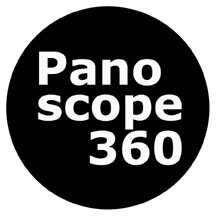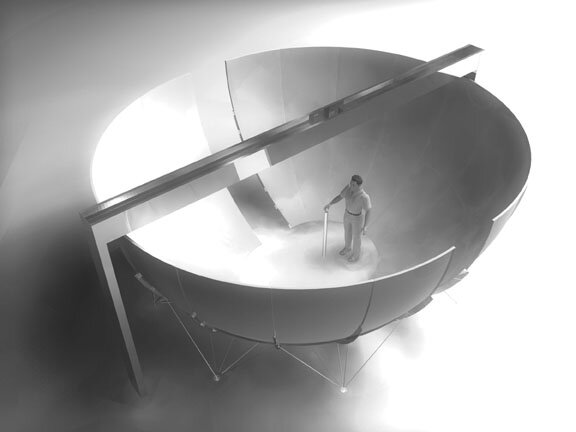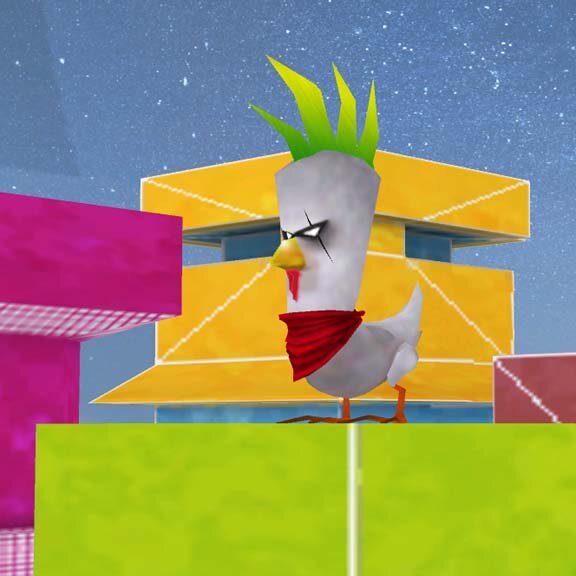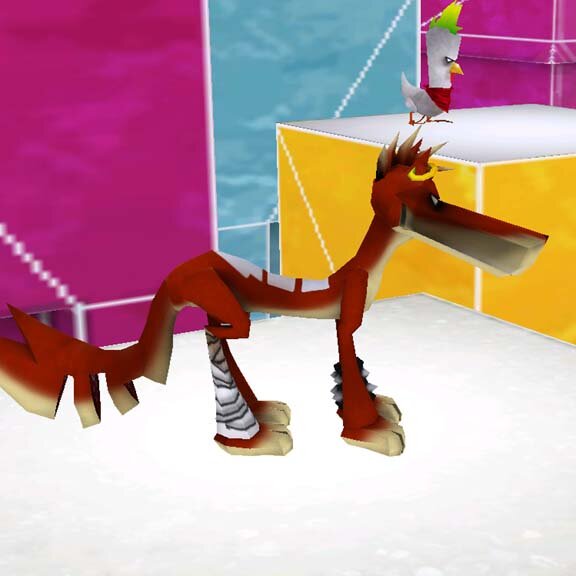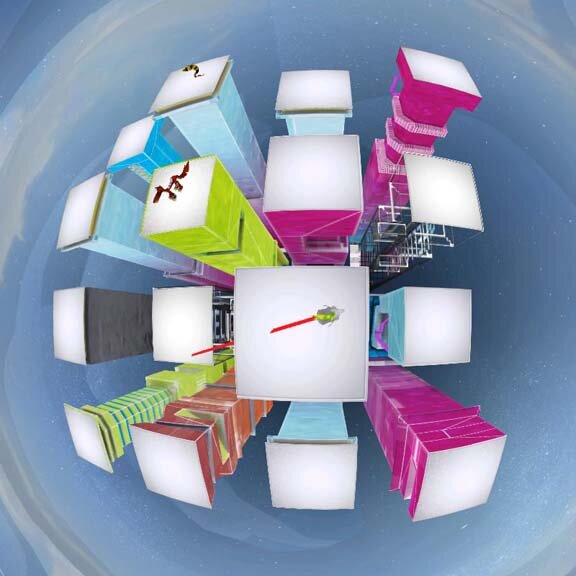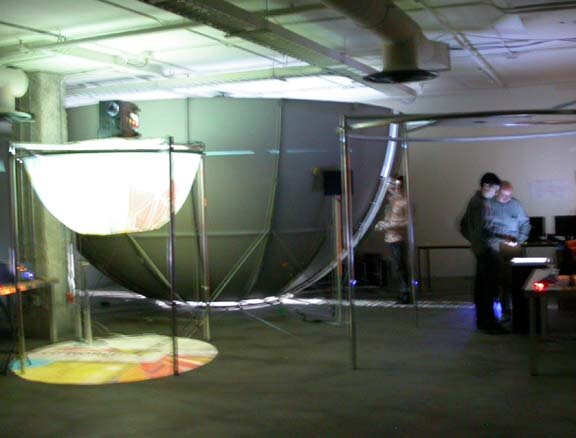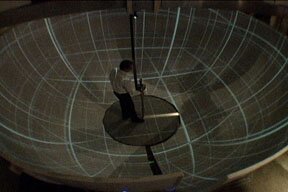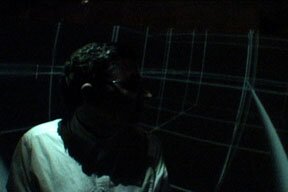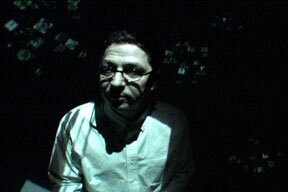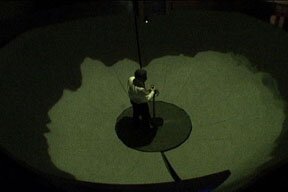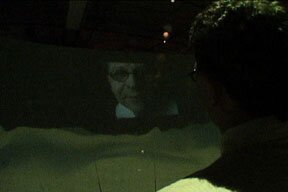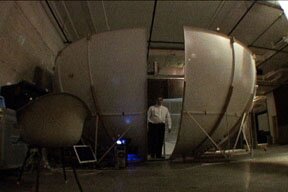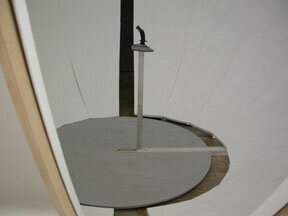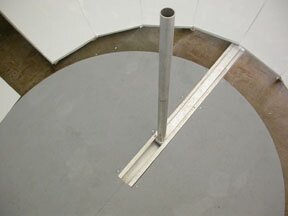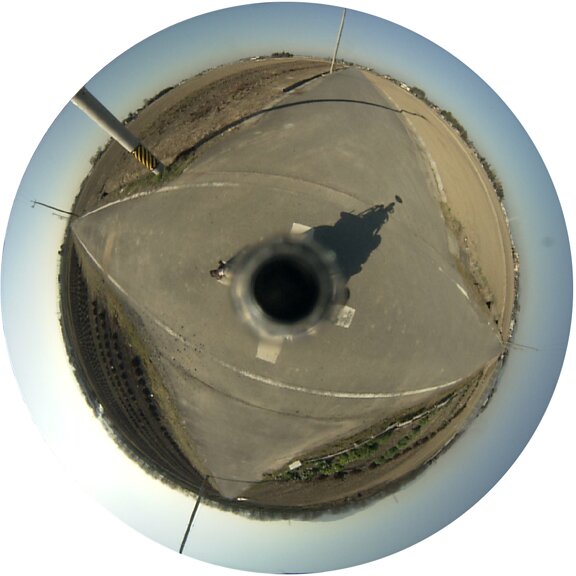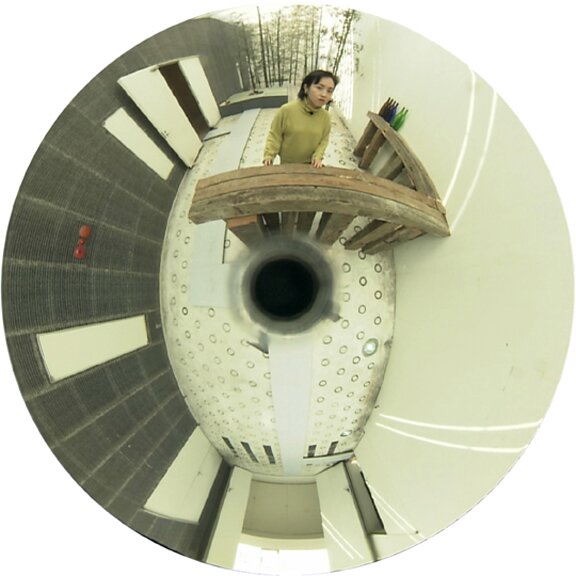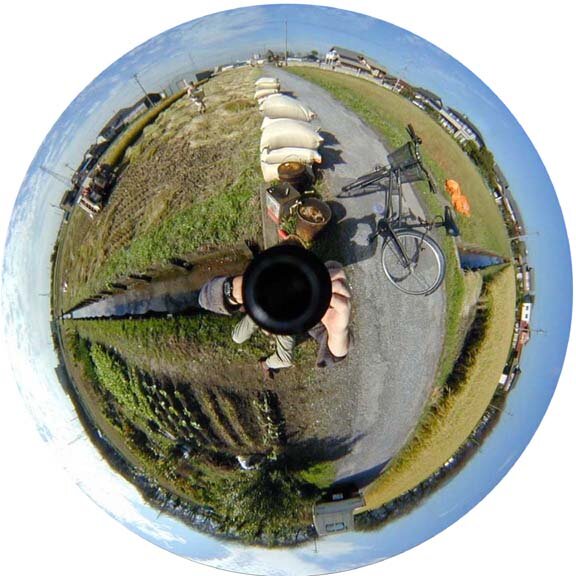Where are you?
An immersive existence simulator and telepresence apparatus
In the featured work Where are you? visitors are invited to fly, as in dreams, through
a world of many dimensions, between past and future, light and darkness, the public and
private. The immersed visitors use a joystick to move in the X, Y and Z axis of an
information/experience space where scale matters.
At scale 0, the world looks like a simple XYZ grid defining the experience of the navigable
space. At scale +1, the world turns into an archive of pictures, sounds, texts and objects
(the author’s). Zooming out at scale +2, elements of this archive become particles in a
“molecular” world of self-organizing clouds of lights reminiscent of late 19th century
impressionistic views of the world and of a nascent abstraction. Zooming yet further out
at scale +3 reveals a sublime landscape of mountains and valleys in tune with the 18th
century idea of the picturesque.
At all these scales, visitors will encounter other inhabitants: live ones through telepresence
links (if activated), pre-recorded subjects in video windows and, ultimately, themselves
when hidden cameras transmit their own image in this constructed world. In Where are
you? the subject (visitor, actor, protagonist) controls his/her position, the path and speed
of his/her journey and, more interestingly perhaps, the scale at which he/she is prepared
to “exist”.
Scale 0
Scale 0, accessible from scales +1 and +3 shows an infinite and navigable X, Y and Z grid
clearly identifying the viewer’s position and the axis of mobility. It serves as a neutral
calibration space for both the system and visitors.
Scale +1
The author’s archive is composed of clusters of elements (images, sounds, texts and objects)
organized within an infinite X, Y and Z structure. Going down (Y-) sinks visitors into increasingly
personal events, going up (Y+) connects to corresponding world events at a given time.
Going South (Z+) will take visitors forward in time and North (Z-) will take visitors backward
in the past. East and West represent attitude: More conservative, to the West, more risky to
the East (arguably). Each element of this personal archive acts as a micro-portal; they are
moments of an unfolding narrative as visitors zoom through and pay attention to some.
Sounds are attached to each element and the visitors’ path creates an evolving 3D soundscape
resulting from a real-time mix of these sources.
A transition to scale +2 can be triggered by visitors at any moment. This rescaling turns
element in the archive into particles of larger self-organizing clouds of lights forming a more
abstract space. The shift is analogous to the passage from the atomic to the molecular level.
Scale +2
Visitor’s experience of Where are you? at scale +2 is of flying as in dreams. The large clouds of
light are clusters of translucent self-organizing cellular automatons. They give the impression of
being inside an infinite living system and invite to a sort of sensational journey and vertiginous
pas-de-deux. Human chants are attached to clusters and the visitor’s path will mix these into an
evolving composition. In this impressionistic, abstract, zero-gravity world, visitors are “angels”
amongst angels.
When triggered, the transition to scale +3 will appears to collapse the soft clusters of clouds
into materials of a terrestrial crust on which visitors land. The reverse transition to scale +1
is also possible from scale +2.
Scale +3
Visitors are suddenly repositioned in the middle of an infinite expanse of plains, mountains
and valleys reminiscent of sublime landscapes of the 18th century picturesque. Controlling their
altitude, speed and direction, they explore a more familiar terrain. Doing so they re-enact the
then new experience of space that inspired people such as Barker and De Saussure in the late
18th century when they formulated their panoramic representations of the world. By doing so
Barker and de Saussure, amongst others, repositioned the subject in the middle of things rather
than in front of the window defined by Alberti more than five centuries earlier. To many, the
late 18th century marks the birth of the “sensitive subject” positioned at the center of a
subjective universe, entitled to emotions and opinions, and authorized to act.
Encounters
At any moment in all three scales of the Where are you? world, visitors may come upon other
beings. They may be live ones through a telepresence connection with other venues when
possible. They may also be pre-recorded “portraits” connected to the immediate context of the
visitor experience. They may finally be visitors themselves, when hidden cameras incorporate
their own image within the “world”. At scale +1, the self-encounter window is set at the X = 0,
Y = 0 and Z = 0 coordinates. At scale +2, the encounter window is attached to a randomly moving
cube of light. At scale +3, the encounter window is perched on top of the highest mountain,
as a reminder of Petrarque’s initiatic climbing of Mount Ventoux in the 14th century.
Re-enchantment
Where are you? is inspired by an study of the larger historical context for today’s art practices.
When the observer of “Alberti’s window” enters Barker’s panorama in the late 18th century, he
metaphorically abandons “God’s womb” to be born to his own world. Left from then on to his
own imagination and judgment to “survive”, the observer -- turned subject, visitor, and now
actor and protagonist -- is thrown into a perpetual identity crisis and craving “mirrors”. The best
mirror is the gaze of others making such that a subject will finally recognize himself.
Where are you? stages a visitor’s introspective and extraverted moods in a neo-sublime universe
where identity is lost… and found again. Where are you? is an attempt at re-enchanting the world.
